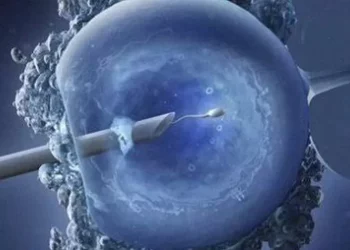Infertility is a common issue affecting many couples worldwide. One common cause of female infertility is blocked fallopian tubes. The fallopian tubes play a crucial role in the reproductive process by allowing the passage of the egg from the ovaries to the uterus. If these tubes are blocked, fertilization and pregnancy become difficult. This article will discuss the symptoms, causes, diagnostic methods, and treatment options for blocked fallopian tubes in detail.
What Are Fallopian Tubes?
The fallopian tubes are two thin tubes, one on each side of the uterus. They are part of the female reproductive system and play a vital role in the process of conception. Each tube connects an ovary to the uterus. During ovulation, an egg is released from one of the ovaries and travels through the fallopian tube towards the uterus. Fertilization usually occurs within the fallopian tube if sperm meets the egg.
Symptoms of Blocked Fallopian Tubes
Blocked fallopian tubes often do not cause any noticeable symptoms. Many women do not realize they have this condition until they experience difficulty in conceiving. However, some signs can indicate blocked fallopian tubes.
1. Infertility
The most common symptom of blocked fallopian tubes is infertility. If a woman has been trying to conceive for over a year without success, blocked fallopian tubes might be a potential cause. Since the egg and sperm cannot meet, fertilization does not occur.
2. Pelvic Pain
Some women with blocked fallopian tubes may experience pelvic pain. This pain can be constant or occur only at specific times, such as during menstruation or ovulation. The pain might be due to the underlying cause of the blockage, such as endometriosis or pelvic inflammatory disease.
3. Painful Periods
Painful periods can also be a symptom of blocked fallopian tubes. Conditions like endometriosis, which can cause fallopian tube blockages, often lead to severe menstrual cramps and pain.
4. Pain During Intercourse
Experiencing pain during intercourse can be another sign. This symptom is often associated with other underlying conditions like pelvic inflammatory disease or endometriosis, which can lead to blocked fallopian tubes.
Causes of Blocked Fallopian Tubes
Several factors can cause fallopian tubes to become blocked. Understanding these causes can help in diagnosing and treating the condition.
1. Pelvic Inflammatory Disease (PID)
PID is a major cause of blocked fallopian tubes. It is an infection of the female reproductive organs and can cause scarring and blockages in the fallopian tubes. PID is often caused by sexually transmitted infections like chlamydia and gonorrhea.
2. Endometriosis
Endometriosis is a condition where tissue similar to the lining of the uterus grows outside the uterus. This tissue can cause blockages in the fallopian tubes, either by directly blocking the tubes or by causing adhesions that bind organs together.
3. Previous Abdominal or Pelvic Surgery
Surgery in the abdominal or pelvic region can lead to adhesions or scar tissue formation. These adhesions can block the fallopian tubes. Common surgeries that might lead to such complications include surgeries for ectopic pregnancies, fibroids, or ovarian cysts.
4. Tubal Ligation Reversal
Tubal ligation is a surgical procedure used as a method of permanent contraception by blocking or sealing the fallopian tubes. Sometimes, women who have had this procedure may choose to reverse it. The reversal process can sometimes lead to blockages due to scar tissue.
5. Hydrosalpinx
Hydrosalpinx is a condition where a fallopian tube is filled with fluid and becomes swollen. This blockage prevents the egg and sperm from meeting. It is often a result of infections or endometriosis.
6. Uterine Infections
Infections in the uterus, often caused by sexually transmitted infections, can spread to the fallopian tubes and cause inflammation and blockages.
See Also: Blocked Fallopian Tubes and Fertility: What’s the Connection?
Diagnostic Methods for Blocked Fallopian Tubes
Diagnosing blocked fallopian tubes requires a thorough medical history, physical examination, and specific diagnostic tests. Here are the primary methods used to diagnose this condition.
1. Hysterosalpingography (HSG)
Hysterosalpingography is a specialized X-ray procedure used to check for blockages in the fallopian tubes. During the procedure, a dye is injected into the uterus through the cervix. This dye outlines the shape of the uterus and fallopian tubes on the X-ray images. If the dye does not flow through the fallopian tubes, it indicates a blockage.
Procedure:
- The patient lies on an X-ray table.
- A speculum is inserted into the vagina to open it.
- A catheter is inserted through the cervix, and a contrast dye is injected.
- X-ray images are taken as the dye flows through the reproductive tract.
- The procedure takes about 30 minutes.
Advantages:
- Minimally invasive
- Provides immediate results
- Can also detect abnormalities in the uterus
Disadvantages:
- Mild discomfort or cramping during the procedure
- Risk of infection or allergic reaction to the dye
2. Sonohysterography
Sonohysterography is an ultrasound-based diagnostic method where saline solution is injected into the uterus through the cervix. This procedure helps in visualizing the inside of the uterus and the fallopian tubes. It can detect blockages, uterine abnormalities, and other issues that might affect fertility.
Procedure:
- Similar to HSG, a speculum is inserted, and a catheter is used to inject saline.
- A transvaginal ultrasound probe is then inserted to capture images.
- The procedure takes about 30 minutes.
Advantages:
- Non-invasive and generally painless
- No exposure to radiation
Disadvantages:
- Might not provide as clear images as HSG
- Slight risk of infection
3. Laparoscopy
Laparoscopy is a surgical procedure that involves making a small incision in the abdomen to insert a laparoscope (a thin tube with a camera) to view the pelvic organs. This method can directly visualize the fallopian tubes and detect blockages, adhesions, and other abnormalities. Sometimes, a dye is also used to check the patency of the fallopian tubes during this procedure.
Procedure:
- Performed under general anesthesia
- A small incision is made near the navel
- A laparoscope is inserted to view the reproductive organs
- Additional instruments may be used to inject dye or remove blockages
- The procedure takes about 30-60 minutes
Advantages:
- Provides a clear and direct view of the reproductive organs
- Can also treat some causes of blockage during the same procedure
Disadvantages:
- Invasive and requires anesthesia
- Risk of complications like infection, bleeding, or damage to organs
4. Hysteroscopy
Hysteroscopy involves inserting a hysteroscope (a thin, lighted tube) through the cervix to view the inside of the uterus and the opening of the fallopian tubes. This method is particularly useful for detecting blockages at the junction where the fallopian tubes meet the uterus.
Procedure:
- Performed under local or general anesthesia
- A hysteroscope is inserted through the cervix into the uterus
- Images are projected onto a screen for examination
- The procedure takes about 30 minutes
Advantages:
- Minimally invasive
- Provides detailed images of the uterine cavity and tubal openings
- Can also treat some abnormalities during the procedure
Disadvantages:
- Risk of infection, bleeding, or injury to the uterus
5. Blood Tests and Imaging
In addition to specific tests for fallopian tube blockages, blood tests and imaging techniques like MRI or CT scans might be used to identify underlying causes of blockages, such as infections or endometriosis.
Procedure:
- Blood samples are taken to check for infections, hormone levels, and other indicators
- Imaging tests are performed as needed
Advantages:
- Non-invasive and widely available
- Can help diagnose underlying conditions
Disadvantages:
- May not directly detect blockages in the fallopian tubes
Treatment Options for Blocked Fallopian Tubes
The treatment for blocked fallopian tubes depends on the cause, location, and extent of the blockage. Here are some of the primary treatment options available.
1. Fertility Medications
Fertility medications, such as Clomiphene Citrate or Gonadotropins, are often prescribed to stimulate ovulation. While these medications do not directly treat blocked fallopian tubes, they can enhance ovulation and increase the chances of conception if there is a partial blockage or if only one tube is affected.
2. Surgery
Surgical procedures can be used to remove blockages, repair damaged tubes, or treat underlying conditions like endometriosis or adhesions. The type of surgery depends on the specific problem and its severity.
Tubal Surgery:
- Tubal Reanastomosis: This procedure involves reconnecting the parts of the fallopian tube that were blocked or cut during a tubal ligation.
- Salpingostomy: Creating an opening in the fallopian tube to remove blockages caused by hydrosalpinx.
- Fimbrioplasty: Repairing the fimbriae (the finger-like projections at the end of the fallopian tube) if they are damaged or blocked.
Procedure:
- Performed under general anesthesia
- Requires small incisions and the use of a laparoscope
- Duration and recovery time vary depending on the procedure
Advantages:
- Can restore tubal function and improve chances of natural conception
- Can address multiple issues in a single procedure
Disadvantages:
- Invasive with risks of complications such as infection, bleeding, or organ damage
- Recovery time can vary depending on the extent of surgery
- Not always successful, especially if there is significant damage to the tubes
3. Assisted Reproductive Techniques (ART)
Assisted reproductive techniques are often recommended for women with blocked fallopian tubes, especially if surgical options are not viable or successful. The most common ART methods include:
In Vitro Fertilization (IVF):
IVF is a widely used ART method that involves retrieving eggs from the ovaries, fertilizing them with sperm in a laboratory, and transferring the resulting embryos into the uterus. Since IVF bypasses the fallopian tubes, it is an effective option for women with blocked tubes.
Procedure:
- Ovarian stimulation with fertility medications to produce multiple eggs
- Egg retrieval under ultrasound guidance
- Fertilization of eggs with sperm in a laboratory
- Culturing embryos for several days
- Transferring one or more embryos into the uterus
Advantages:
- High success rates, especially for younger women
- Bypasses fallopian tubes, making it suitable for tubal factor infertility
- Allows for genetic testing of embryos
Disadvantages:
- Expensive and not always covered by insurance
- Involves multiple steps and can be physically and emotionally demanding
- Risk of multiple pregnancies if multiple embryos are transferred
Intracytoplasmic Sperm Injection (ICSI):
ICSI is a variation of IVF where a single sperm is directly injected into an egg to facilitate fertilization. This technique is particularly useful in cases of male factor infertility or previous IVF failures.
Procedure:
- Similar to IVF up to the point of fertilization
- Instead of mixing sperm and eggs, a single sperm is injected into each mature egg
Advantages:
- Increases the likelihood of fertilization in cases of severe male infertility
- Can be combined with IVF for better outcomes
Disadvantages:
- Adds to the cost and complexity of IVF
- Involves similar risks and challenges as standard IVF
4. Non-Surgical Interventions
In some cases, non-surgical interventions might help in managing blocked fallopian tubes or improving fertility. These include:
Selective Tubal Cannulation:
This is a non-surgical procedure where a thin catheter is inserted through the cervix and uterus into the fallopian tube to remove a blockage. It is typically used for blockages near the uterus.
Procedure:
- Performed under sedation or light anesthesia
- A catheter is guided through the cervix and uterus into the fallopian tube
- Dye or saline solution is injected to clear the blockage
Advantages:
- Minimally invasive with quick recovery
- Can be performed as an outpatient procedure
Disadvantages:
- Only effective for certain types of blockages
- Risk of infection or damage to the tube
Balloon Tuboplasty:
This procedure involves inserting a small balloon into the fallopian tube and inflating it to clear blockages. It is similar to angioplasty used for clearing blocked blood vessels.
Procedure:
- Performed under local anesthesia
- A catheter with a balloon is inserted into the fallopian tube
- The balloon is inflated to open the blockage
Advantages:
- Minimally invasive with quick recovery
- Can be effective for certain types of blockages
Disadvantages:
- Limited success rates depending on the type and location of blockage
- Risk of infection or damage to the tube
Managing Expectations and Emotional Well-being
Dealing with blocked fallopian tubes and infertility can be emotionally challenging. It is important to manage expectations and seek support throughout the diagnosis and treatment process.
1. Counseling and Support Groups
Counseling can provide emotional support and coping strategies for dealing with infertility. Support groups offer a platform to share experiences and gain insights from others going through similar challenges.
2. Open Communication
Maintaining open communication with your partner, family, and healthcare providers is crucial. Discussing concerns, treatment options, and expectations can help in making informed decisions and reducing stress.
3. Self-Care
Practicing self-care is essential for emotional and physical well-being. Engaging in activities that reduce stress, such as exercise, yoga, meditation, or hobbies, can be beneficial.
4. Professional Guidance
Working closely with a fertility specialist and following their recommendations is important. They can provide personalized treatment plans and guide you through each step of the process.
Conclusion
Blocked fallopian tubes are a significant cause of female infertility, but various diagnostic and treatment options are available. Early detection and appropriate treatment can improve the chances of conception. Understanding the symptoms, causes, and diagnostic methods helps in addressing this condition effectively. While the journey through diagnosis and treatment can be challenging, emotional support, open communication, and professional guidance play a crucial role in managing infertility. By exploring all available options and staying informed, many women with blocked fallopian tubes can achieve their dream of becoming mothers.
Related Links:



























